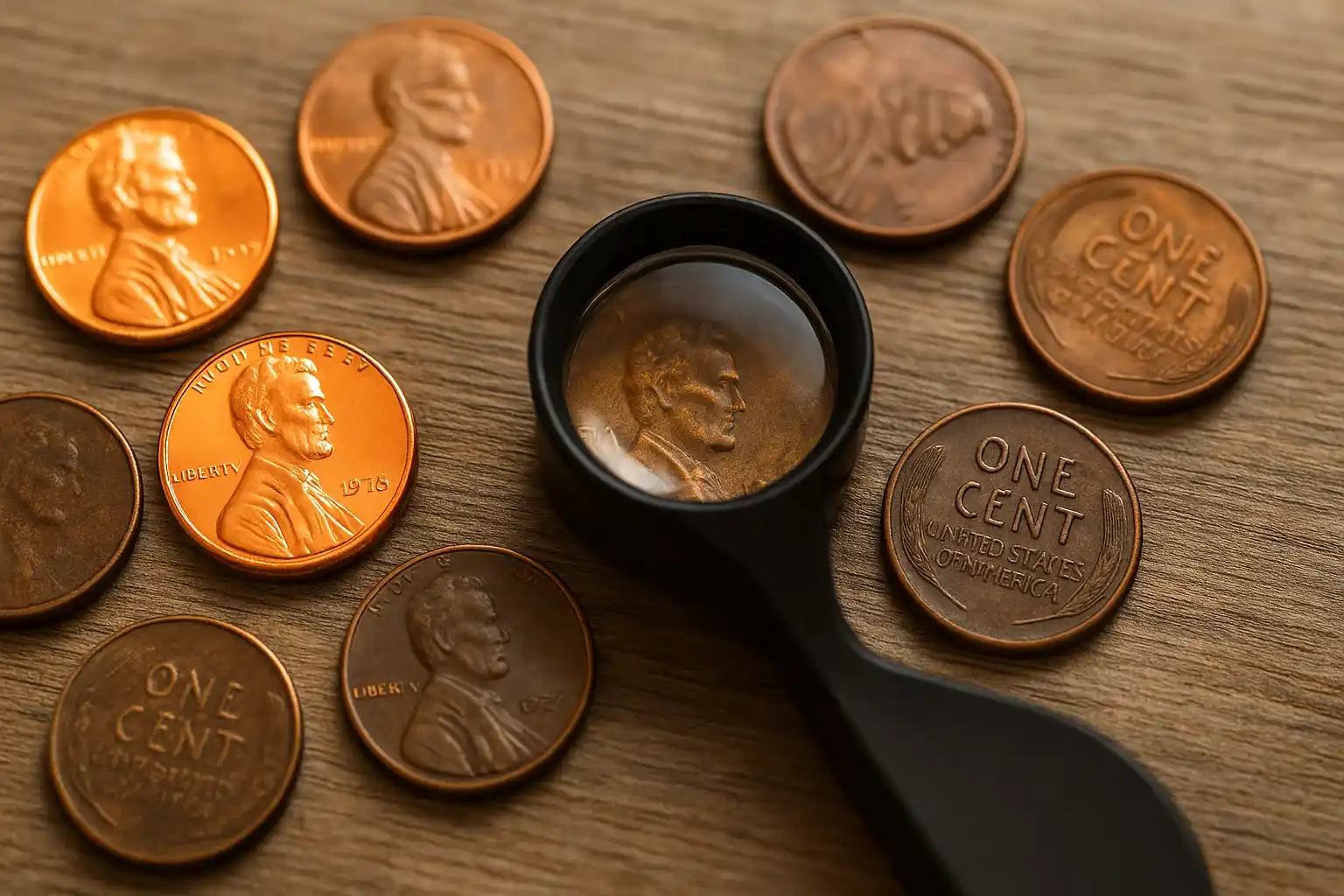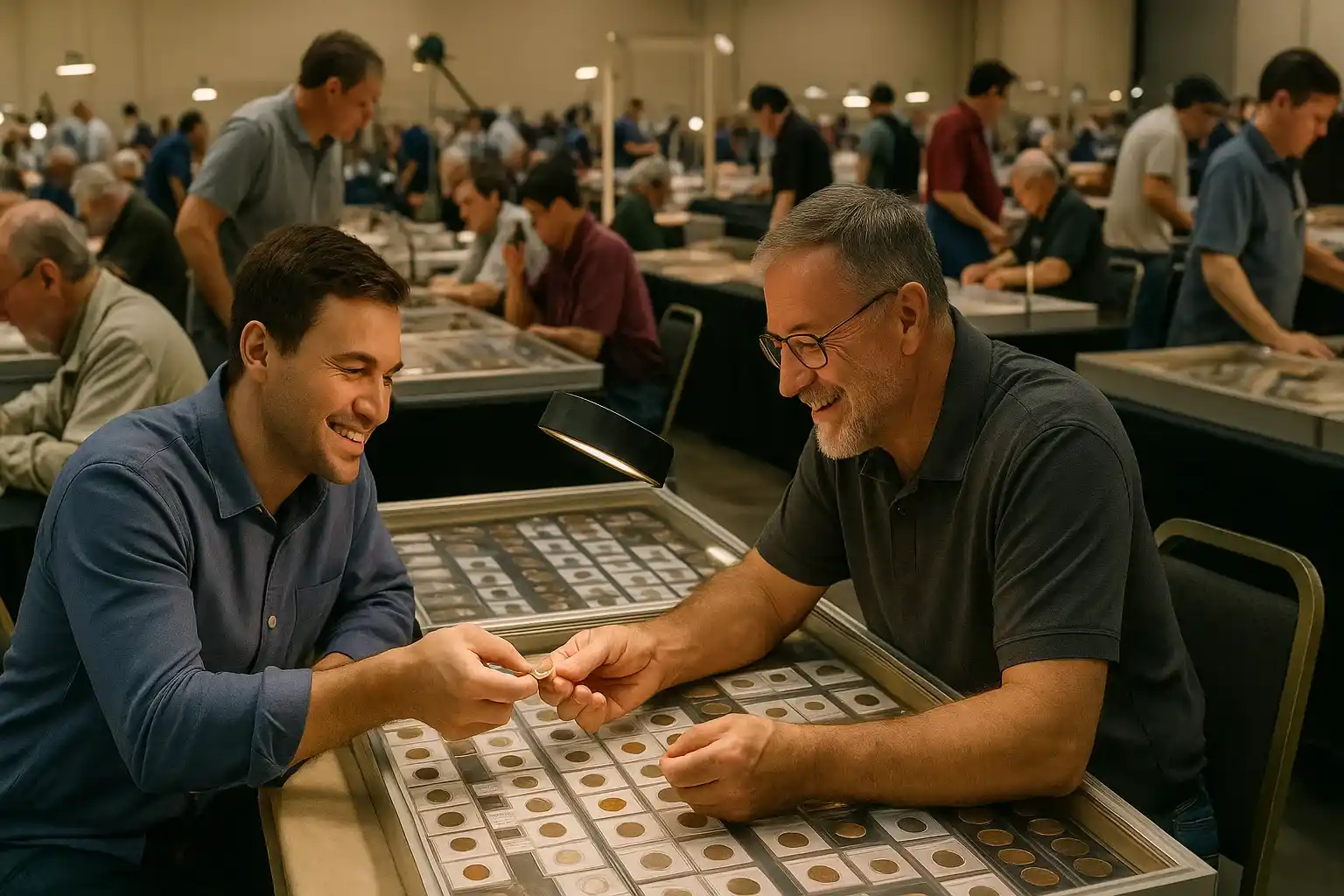How to Tell if Your Penny Is Valuable
Assessing a penny comes down to its date, mint mark, condition, and color. For example, the 1949 penny value can range from just a few cents in worn Brown condition to several dollars in Mint State with full Red luster.
Errors, varieties, and third-party certification can raise prices even higher. So, careful inspection is essential for determining a coin’s true worth.
Why Should You Assess It?
You should assess a penny because its condition and details directly determine its value, rarity, and collector demand. Two coins with the same date can have completely different prices depending on grade and color—one might be worth only face value, while another could be worth hundreds. Careful assessment also helps you:
Identify valuable varieties or errors that may go unnoticed.
Avoid overpaying when buying or underpricing when selling.
Protect your investment by knowing which coins are worth professional grading.
Preserve history, since accurate assessment highlights a coin’s originality and authenticity.
In short, assessment transforms a simple old penny into either pocket change or a collectible asset.

Assessment Techniques
To assess a penny, you follow a structured process that highlights its condition and potential value. The main methods are:
1. Identify the Date and Mint Mark
Start by locating the year and the mint letter. This determines how many were made and whether the coin is common or scarce.
2. Grade the Condition
Use the coin grading scale, from heavily worn Good (G) all the way to flawless Mint State (MS). Higher grades usually mean higher value.
3. Evaluate the Color (for copper coins)
Professional graders classify copper cents as Red (RD), Red-Brown (RB), or Brown (BN). A coin with more original red luster will nearly always be worth more.
4. Check for Errors and Varieties
Look for doubled dies, repunched mint marks, off-center strikes, or other striking anomalies. Even minor varieties can raise a coin’s desirability.
5. Consider Professional Certification
Submitting a coin to PCGS, NGC, or another grading service ensures authenticity and assigns a recognized grade. This makes the coin more liquid in the marketplace.
Professional Certification
Professional Certification is the process of sending a coin to a recognized grading service, such as PCGS (Professional Coin Grading Service) or NGC (Numismatic Guaranty Company), to have it officially authenticated, graded, and encapsulated in a protective holder.
When a penny is certified, several things happen:
Authentication: Experts confirm the coin is genuine and not altered or counterfeit.
Grading: The coin is assigned a grade on the 1–70 Sheldon scale, along with a color designation (RD, RB, BN for copper coins).
Encapsulation: The coin is sealed in a tamper-evident plastic holder, often called a “slab,” with its grade and details printed on a label.
Market Confidence: Certified coins are easier to sell and often command higher prices because buyers trust the grade and authenticity.
Preservation: Encapsulation protects the coin from handling, air, and moisture, helping to maintain its condition long term.
Certification is especially valuable for higher-grade coins, rare varieties, and coins where small differences in grade or color can mean large differences in value.
How Do They Work?
Professional grading services like PCGS and NGC work by combining expert evaluation with strict procedures to ensure accuracy, consistency, and market trust. The process follows several stages:
Submission
A collector or dealer submits a coin directly or through an authorized dealer. The coin is assigned a tracking number and placed in protective packaging to avoid damage.
Authentication
Specialists examine the coin to confirm it is genuine. They use magnification, microscopes, and specialized lighting to spot counterfeits, altered surfaces, or added mint marks.
Grading
Multiple graders independently evaluate the coin’s strike, luster, marks, and overall eye appeal.
For copper coins, they also determine color designations: Red (RD), Red-Brown (RB), or Brown (BN).
Grades are assigned using the Sheldon scale from 1 (Poor) to 70 (Perfect Mint State).
Consensus
A finalizer reviews all graders’ opinions and sets the official grade. This system prevents one person’s bias from deciding the outcome.
Encapsulation
The coin is sealed in a tamper-evident holder, often called a slab, which protects it and includes a label showing:
Grade
Date and mint mark
Certification number
Special attributions (errors, varieties, designations like RD or Full Steps)
Verification and Registry
Each coin receives a unique certification number. Collectors can verify details online in the service’s database, ensuring transparency.
Market Impact
Certified coins carry higher trust because buyers know they are genuine and consistently graded. This often raises resale prices compared to raw (uncertified) coins.
At-Home Equipment
When assessing pennies at home, collectors rely on a small but effective set of tools. These help you spot details, judge condition, and catch varieties before deciding whether a coin deserves professional grading. The essential equipment includes:
1. Magnification Tools
A 10x jeweler’s loupe is the standard for grading and authentication.
A handheld magnifier (5x–20x) helps examine surfaces, wear, and marks.
A digital microscope allows close-up study of mint marks, doubling, or die cracks.
2. Good Lighting
A bright, neutral white LED lamp reveals luster and surface quality.
Angled lighting highlights cartwheel effect, scratches, and hairlines.
3. Reference Materials
A current coin price guide (like the Red Book or an online database like those in the Coin ID Scanner app) to compare values.
Variety reference books or websites to identify doubled dies, RPMs, or errors.
4. Weighing and Measuring Tools
A digital scale accurate to 0.01 grams helps verify the coin’s weight (important for spotting counterfeits).
A caliper measures diameter and thickness for comparison with official specs.
5. Handling and Storage Supplies
Cotton gloves or soft-handling techniques to avoid skin oils on the surface.
2x2 cardboard flips, capsules, or holders to store coins securely after assessment.
6. Photography Setup (Optional)
A camera or smartphone with macro mode helps document coins and share them with other collectors or forums for opinions.
Who Can Help?

A local coin dealer is often the most convenient option, since many shops will look at your coins and give you a quick estimate of condition and market value. Coin shows are another strong choice, bringing together multiple dealers and experts in one place, which allows you to gather several opinions in a single visit.
For high-value coins, professional grading services such as PCGS, NGC, or ANACS provide the most trusted solution. They authenticate the coin, assign a grade, and seal it in a protective holder.
If you’re just beginning and want to learn, joining a local coin club or the American Numismatic Association can connect you with experienced collectors who enjoy sharing their knowledge. And for quick feedback or to spot varieties and errors, online communities like collector forums and social media groups can be surprisingly helpful.
The best choice depends on your situation: a common penny may only need a dealer’s glance, while a rare or high-grade example deserves professional certification.
Investment Perspectives
From an investment perspective, not all pennies are equal. Some have proven themselves as long-term stores of value, while others remain primarily of interest to hobbyists.
Pennies that tend to hold or grow in value are those with scarcity, condition rarity, or significant historical interest. Key-date Lincoln cents, such as the 1909-S VDB or the 1914-D, consistently attract demand and rarely lose market strength. High-grade examples with full Red (RD) color, especially those certified by PCGS or NGC, are also strong investments because Red copper is fragile and uncommon in older dates. Varieties and major errors—like the 1955 doubled die obverse or the 1922 “No D”—carry premiums that usually rise over time, since collector awareness only grows and supply cannot increase.
On the other hand, most common-date Wheat cents in circulated condition, and nearly all modern Memorial cents after 1959 in worn grades, fall into the category of casual collecting. They’re excellent for beginners to learn grading and storage, but their value is closely tied to face value or small premiums. Even modern copper cents from the pre-1982 era, while worth more than one cent in melt value, don’t offer much investment potential beyond bulk saving.
In short, serious investment in pennies favors key dates, high grades, and dramatic varieties, while circulated common issues remain the playground for entry-level collectors and educational sets.
Conclusion
Assessing pennies is straightforward when you focus on the fundamentals.
Start with the date and mint mark, since rarity often begins there.
Judge the grade and condition, from heavily worn to Mint State.
Take note of color designations—Red, Red-Brown, and Brown—because they strongly influence price.
Watch for errors and varieties that can set a coin apart.
Use certification when a coin has the quality or rarity to justify it.
For investment, the strongest candidates are key dates, high-grade Red coins, dramatic varieties, and certified pieces. Casual collectors will find enjoyment in common Wheat cents, modern issues, and bulk copper coins.
In the end, penny assessment gives you clarity: it tells you when a coin is simply part of everyday change and when it belongs in the category of true collectibles or investments.
